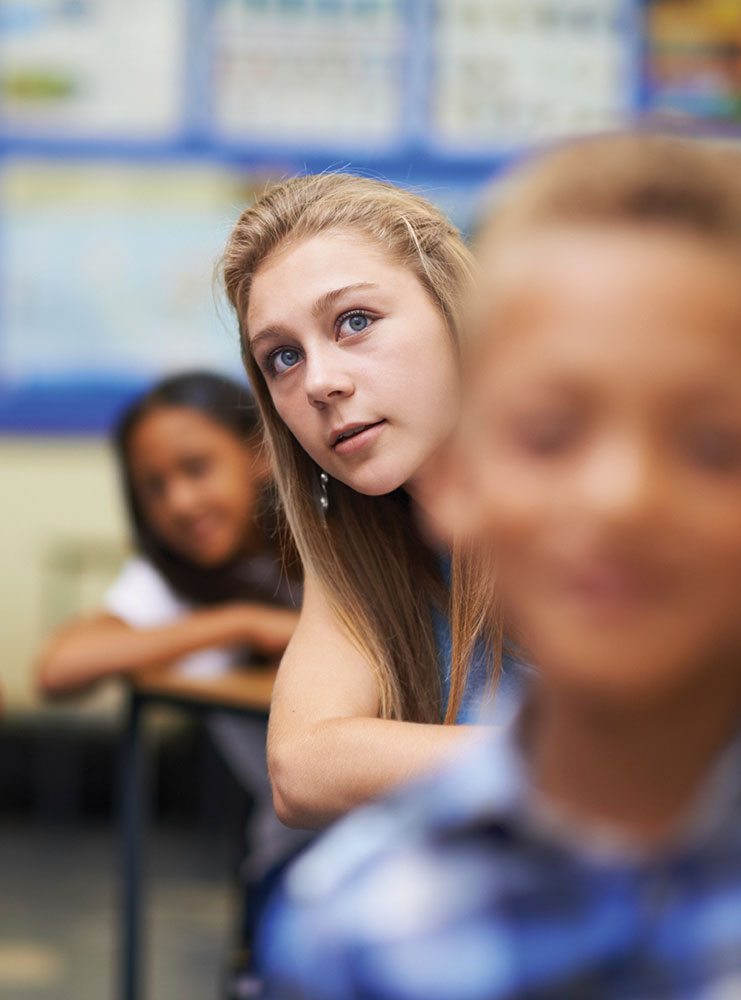 The first day of sixth-grade sex education class was punctuated by the usual giggles. One girl raised her hand sheepishly. “Excuse me, Miss?” she asked her teacher. “You do know the boys are still here, don’t you?”
The first day of sixth-grade sex education class was punctuated by the usual giggles. One girl raised her hand sheepishly. “Excuse me, Miss?” she asked her teacher. “You do know the boys are still here, don’t you?”Shira Cahn-Lipman did know — and she approved. As a health educator then, and as the manager of youth education at Planned Parenthood League of Massachusetts (PPLM) now, she believes strongly in keeping boys and girls together for sex ed. “In my experience of teaching the curriculum, there are giggles, no matter what, in the first class,” she says.
Getting sex ed right can be a tricky business. Aside from the giggles, what are students and their parents taking away from these classes today? Is there general agreement that the classes have some effect in encouraging healthy behavior in preteens and teens? Is it clear what works and what doesn’t?
Our bodies, our choices, ourselves
Seattle Public Schools (SPS) relies on the King County Department of Public Health’s Family Life and Sexual Health, or FLASH, sex-ed curriculum. The school district helped create FLASH in 1986 in response to state-mandated HIV education for grades 5 through 12.
“We feel strongly that kids need to know their rights around their bodies, their health and their relationships,” says the appropriately named Lisa Love, manager of health education for SPS.
In fifth-grade sex education, students concentrate on puberty, self-esteem and relationships. Middle school includes more about physical, emotional, biological and sexual health, and what goes into healthy decision making. In ninth-grade health classes, “we’re looking at what are gender stereotypes and how they might limit our ability to make healthy decisions,” Love says.
Before the FLASH curriculum begins, parents receive letters describing the program and informing them of their right to opt out their kids — an increasingly rare choice, according to Love. “Culturally or religiously, some parents don’t want their children having these discussions with peers and teachers,” she says. “But, frankly, most families are happy the conversation is happening. It really encourages family discussion.”
Get Real, the comprehensive sex education program developed by PPLM and used in 150 schools across Massachusetts, incorporates a number of family activities into the curriculum. The league also runs workshops that help approximately 2,700 parents and caregivers each year to be successful primary sex educators for their children.
“We want the important people in their lives to be part of that conversation,” Cahn-Lipman says. She recalls one student who was delighted that he got to teach his parents something. “Wow,” he said, “my dad had no idea what the vas deferens was.”
“We know kids want to be able to talk to their parents about this,” Cahn-Lipman says. “This way, it doesn’t have to be the talk. It can be so many talks leading toward the goal of making healthy decisions.”
Finding the role that fits
In Get Real class, students participate in role-playing exercises involving negotiations in sexual situations. For example, one character wants to engage in a sexual behavior; the other doesn’t. The class brainstorms about who the characters are and what they might look and sound like. Then every student in class practices both characters.
Gender identity is also an important part of the curriculum, says Jen Slonaker, PPLM’s vice president of education and training. “Anecdotally, the audiences of young people we’ve worked with over the years have exhibited increasing acceptance of gender identity across a spectrum,” Slonaker says. “Unfortunately, the most recent research shows that an extremely high percentage of transgender youth report harassment in schools. That’s why it’s so important [for schools] to create safe and supportive learning environments.” Essential to that goal, she adds, is including the needs of lesbian, gay, bisexual and transgender (LGBT) students in sex education.
In California, the Oakland Unified School District (OUSD) will introduce its revised comprehensive sex education program, funded by a federal grant, next year. Because the state has no health education graduation requirement, this curriculum will be incorporated into English and science classes.
Student focus groups were asked what should be in the program, and they were full of surprises. “A lot of them wanted to know why people have sex,” says Julia Feldman, health science specialist for OUSD. “One of our assumptions has been that teenagers are all sexually active, and we’re just trying to prevent them from doing it. But, for a lot of them, it’s uncharted territory.”
Parents and schools take the reins
Surveys of parents nationwide have shown overwhelming support for sex education in school. According to the National Conference of State Legislatures, 22 states and the District of Columbia require that public schools teach sex education. Nineteen states require that, if provided, sex education must be medically, factually or technically accurate.
The good news is that something is working. Teen birth rates in the U.S. have fallen to historic lows. The National Center for Health Statistics reports that births to teens ages 15–19 numbered 274,641 in 2013, the lowest since the organization began tracking the data in 1933. That figure translates to a 10 percent drop in the teen birth rate from 2012 to 2013.
“It’s wonderful,” Feldman says. “But if anyone tells you they know exactly why it’s happening, they’re lying.” She points to the fact that today’s teens have come of age in a challenging era. “These kids have grown up at a time when there has always been AIDS and HIV. Just like computers and texting, that’s their reality.”
But it is also clear to Feldman and other health educators that sex education has played a major role in the positive news about teen birth rates.
Preliminary results from a study conducted by the Wellesley Centers for Women show that students exposed to one year of the Get Real program were 30 percent less likely to report becoming sexually active than students in control classes.
“What’s been really clear is that when students have access to good-quality, comprehensive sex education, they make healthy decisions for themselves,” Slonaker says.
The ‘reality’ factor
What does MTV have to do with the drop in teen pregnancy rates? Maybe more than you think.
A study released in January of this year by the National Bureau of Economic Research found that geographic locations with higher search activity and tweets about MTV’s controversial reality show 16 and Pregnant also showed more searches and tweets about birth control and abortion. “This reminds me to take my birth control,” one post said. “Watching 16 & Pregnant, going to take my birth control,” said another.
Of course, no one claims the show is completely responsible for the decline in teen pregnancy. In fact, some health educators doubt the findings entirely. But hey, others say — at least it encourages teens to think about the issue.
“There are a lot of different ways to reach students and get their attention to try to change their behavior,” says Lisa Love of Seattle Public Schools. “If that is working, terrific.”











